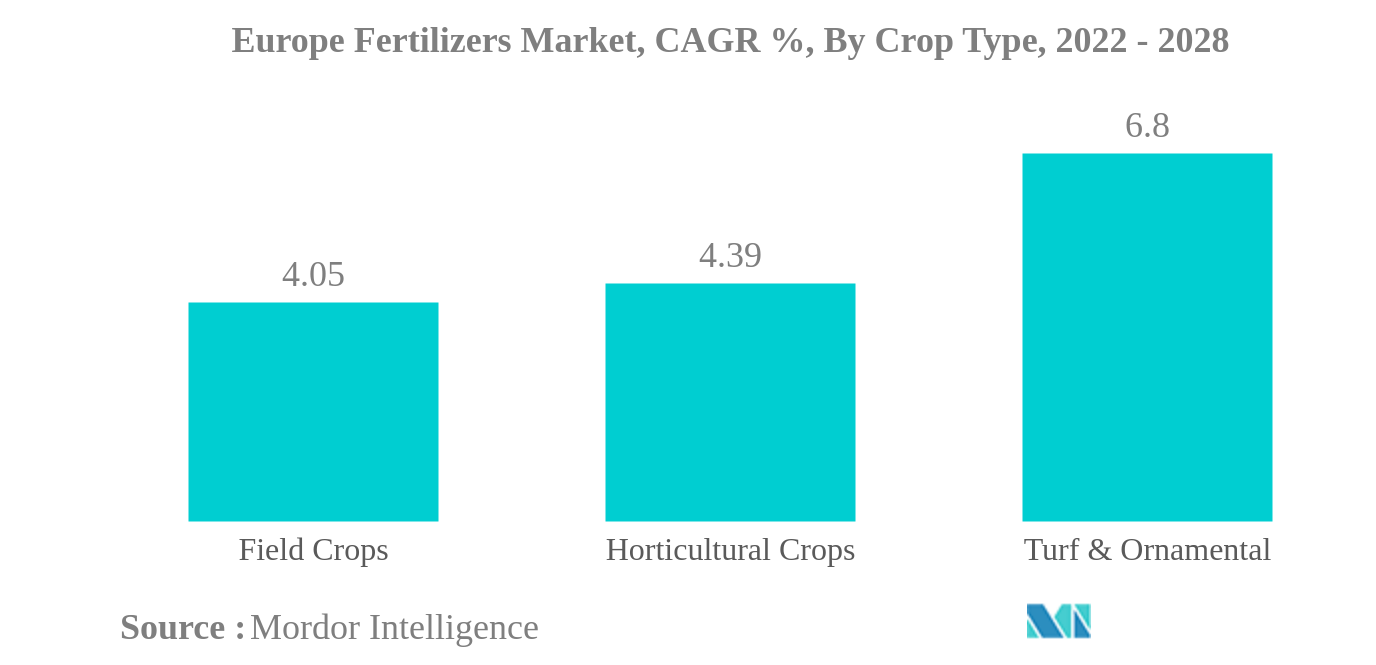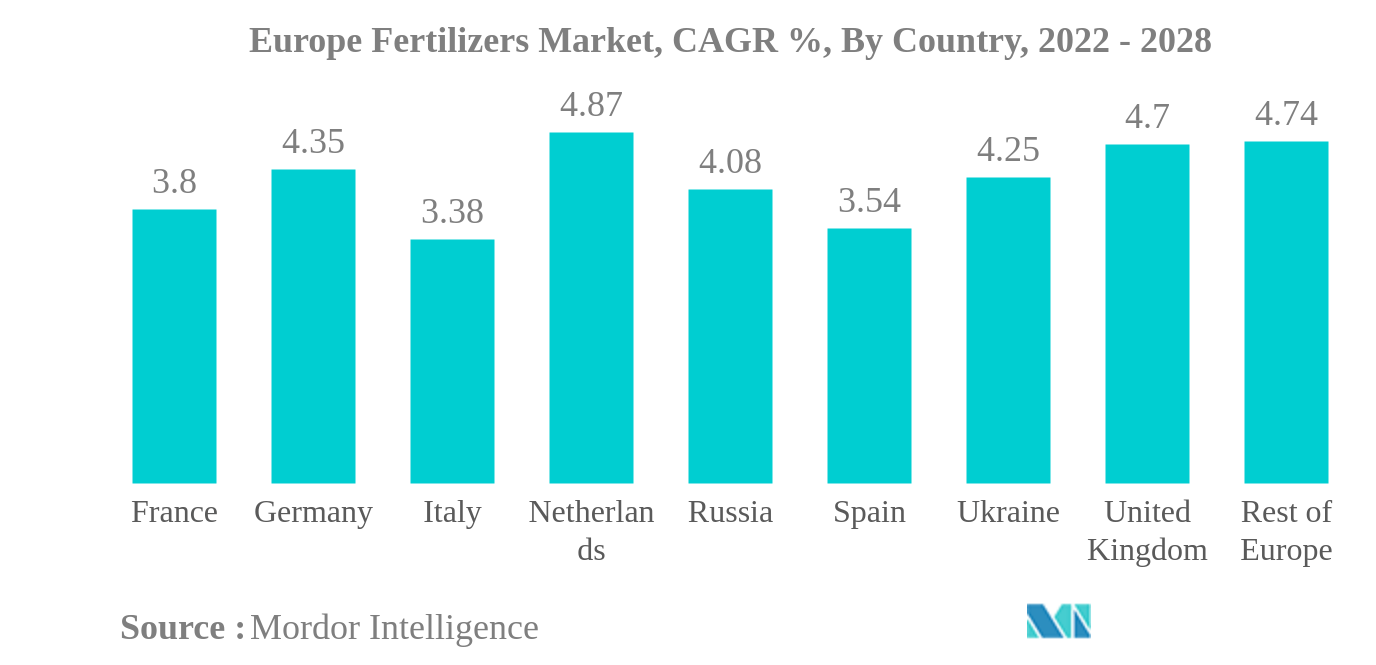Market Trends of europe fertilizers Industry
This section covers the major market trends shaping the Europe Fertilizers Market according to our research experts:
Field Crops is the largest segment by Crop Type.
- The overall fertilizer consumption by field crops accounted for 85.54% of the market value in 2021 and has grown by 15.28% during the study period. To increase the yield, farmers are applying conventional as well as specialty-type fertilizers. Most of the conventional type fertilizers are applied on soil for field crops, accounting for 85.8% of the market in 2021.
- The area under fruit and vegetable cultivation in the region has decreased by 1.15% and 11.18% from 2016-2020. Almost 90.0% of European consumers over the age of 15 fail to eat adequate amounts of fruit and vegetables, according to Eurostat.
- Also, the decreased consumption of fruits and vegetables in the region has resulted in a decrease in producer organizations from 1712 in 2016 to 1604 in 2020. Hence, the decreased consumption and area under cultivation are anticipated to result in marginal growth of the segment during the forecast period. Producing countries within close distance of Europe has become an attractive and economical option for European companies. Due to their low production costs, they can produce fresh fruit and vegetables early in the season when European produce is not yet ready to go to the market. This offers opportunities for nearby suppliers such as Egypt, Morocco, Tunisia, and Turkey.
- The turf and ornamental segment of the market accounted for 9% of the overall fertilizers market in 2021. The ornamental production in the region increased by 9.3% from 2016-2019 and is anticipated to boost the segment growth during the forecast period.
- Hence, based on the aforementioned characteristics, the field crop and turf and ornamental fertilizer consumption is anticipated to grow significantly during the forecast period.

France is the largest segment by Country.
- France is one of the largest fertilizer-consuming countries in Europe, with an expected overall share of 20.1% in 2022. The market value is expected to reach USD 9 billion in the same year, with a 5.8% Y-o-Y growth. However, it stands third in terms of volume consumption after Ukraine and Russia, which is attributed to the higher fertilizer prices in France.
- Ukraine accounted for 14% of the total fertilizer consumption in Europe in 2021, with a volume consumption of 10.2 million metric tons. This may be due to the cultivation of high fertilizer-consuming crops like wheat, maize, and other field crops accounting for 90% of the area under cultivation.
- The fertilizer market in Europe was valued at USD 41.2 billion in 2021, with a volume consumption of 71 million ton in the same year. The market is observed to have an increasing trend since 2017, with a dip in 2020 due to supply chain disruptions during the COVID-19 pandemic. The ongoing war in Russia-Ukraine and the sanctions imposed on Russia by various European countries may further affect the supplies from Russia, which is one of the important producers and suppliers of fertilizer to the European region and the international market.
- The heatwaves and droughts in various parts of Europe are expected to affect production in 2022, which may lead to less usage of fertilizers in the region, slightly hindering the market growth.
- Factors like the growing population's need for higher food production and productivity amid the decreasing area under cultivation will drive the market. The adaption of advanced cultivation methods will also increase the usage of specialty fertilizers.

